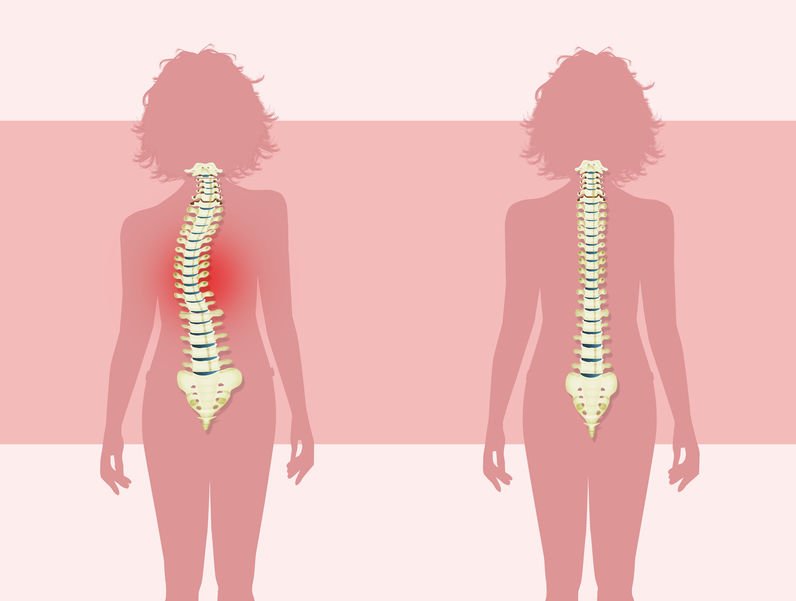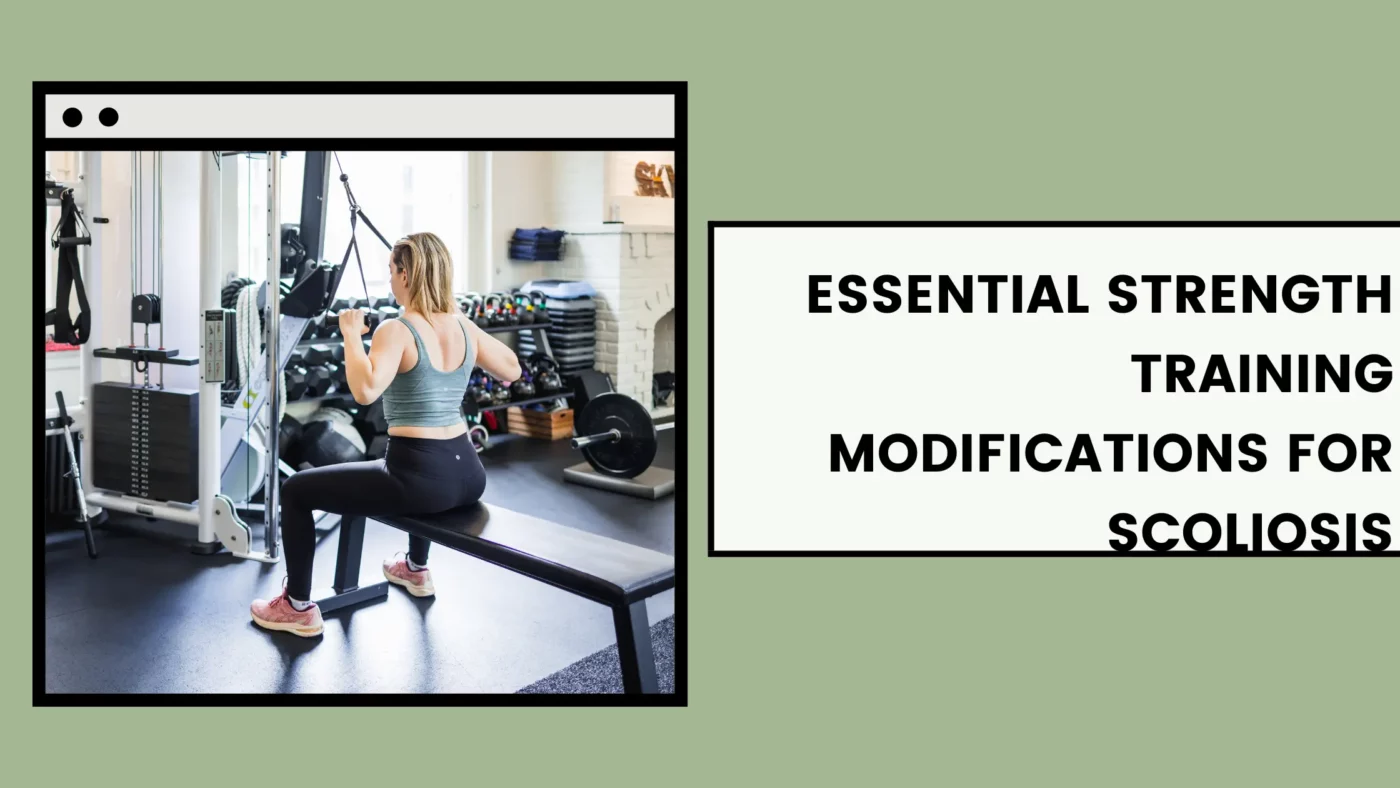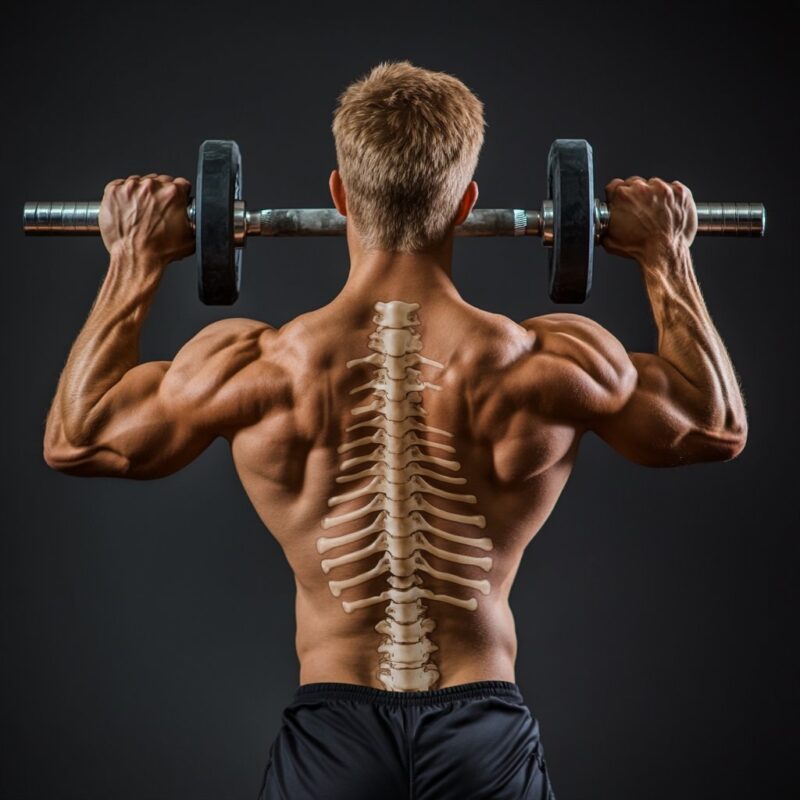Scoliosis is a condition characterized by an abnormal curvature of the spine, which can cause pain, discomfort, and limited mobility. While it may seem counterintuitive, weight lifting can actually be beneficial for individuals with scoliosis. In this comprehensive guide, we will explore the various aspects of scoliosis weight lifting, including understanding scoliosis, the benefits of weight lifting, preparing for weight lifting, essential safety measures, choosing the right exercises, incorporating flexibility and stretching, monitoring progress, and empowering scoliosis patients through safe and effective weight lifting.

Understanding Scoliosis: Causes, Symptoms, and Implications for Strength Training
Scoliosis can have various causes, including genetic factors, neuromuscular conditions, and unknown factors. It typically develops during childhood or adolescence, and the severity of the curvature can vary greatly. Common symptoms of scoliosis include an uneven waistline, one shoulder higher than the other, and an abnormal curvature of the spine. When it comes to strength training, it is important to understand the implications of scoliosis on the body. The abnormal curvature can lead to muscle imbalances, postural issues, and decreased flexibility, which can affect the effectiveness and safety of weight lifting exercises.
Benefits of Weight Lifting for Scoliosis Patients
Despite the challenges posed by scoliosis, weight lifting can offer numerous benefits for patients. Firstly, it helps to strengthen the muscles surrounding the spine, which can improve posture and stability. Additionally, weight lifting can increase bone density, reducing the risk of osteoporosis, a common concern for individuals with scoliosis. Moreover, strength training can alleviate pain and discomfort associated with scoliosis by improving muscle imbalances and promoting better alignment of the spine. Lastly, weight lifting can boost self-confidence and improve overall mental well-being, as patients witness their progress and physical capabilities.
Preparing for Weight Lifting: Assessing Your Condition and Setting Realistic Goals
Before embarking on a weight lifting journey, it is crucial to assess your condition and set realistic goals. Consulting with a healthcare professional, such as a physical therapist or orthopedic specialist, is highly recommended. They can evaluate your spine curvature, muscle imbalances, and overall physical condition to provide personalized guidance. It is important to understand your limitations and establish realistic expectations. Setting achievable goals will help you stay motivated and prevent potential injuries.
Essential Safety Measures: Guidelines for Scoliosis Patients
Safety should be the top priority when engaging in weight lifting with scoliosis. Here are some essential safety measures to keep in mind:
- Warm-up: Begin each workout session with a thorough warm-up to increase blood flow, loosen muscles, and prepare your body for exercise. This can include light cardio exercises, dynamic stretches, and mobility drills.
- Proper form: Focus on maintaining proper form throughout each exercise to ensure maximum effectiveness and minimize the risk of injury. Engage your core, keep your spine neutral, and avoid excessive twisting or bending.
- Gradual progression: Start with lighter weights and gradually increase the intensity as your strength and stability improve. Avoid pushing yourself too hard, as this can strain your muscles and exacerbate your condition.
- Rest and recovery: Allow your body sufficient time to rest and recover between workouts. This is especially important for individuals with scoliosis, as overtraining can lead to muscle imbalances and increased pain.
- Listen to your body: Pay attention to any pain or discomfort during weight lifting. If an exercise causes significant pain, modify or avoid it altogether. It is important to find a balance between pushing yourself and respecting your body’s limitations.

Choosing the Right Exercises: Strength Training Techniques for Scoliosis
When it comes to weight lifting for scoliosis, it is crucial to choose exercises that target the muscles surrounding the spine and promote better alignment. Here are some strength training techniques that can be beneficial for scoliosis patients:
- Isometric exercises: Isometric exercises involve contracting muscles without joint movement. These exercises can help improve stability and strengthen the muscles supporting the spine. Examples include planks, wall sits, and static holds.
- Resistance training: Utilizing resistance bands or weights can help strengthen the muscles surrounding the spine. Exercises such as rows, lat pulldowns, and chest presses can be effective in improving posture and stability.
- Functional training: Incorporating functional movements into your weight lifting routine can help improve overall strength and stability. Exercises like squats, lunges, and deadlifts engage multiple muscle groups and promote better alignment.

Core Strengthening Exercises for Scoliosis Patients
Core strengthening exercises are particularly important for individuals with scoliosis, as they help improve stability and support the spine. Here are some effective core exercises for scoliosis patients:
- Plank variations: Planks are excellent for strengthening the core muscles. Start with a basic plank and gradually progress to side planks, forearm planks, and stability ball planks.
- Bird dogs: This exercise targets the deep core muscles and improves stability. Begin on all fours and extend one arm and the opposite leg simultaneously, maintaining a neutral spine.
- Russian twists: Russian twists engage the oblique muscles and promote better spinal alignment. Sit on the floor with your knees bent, lean back slightly, and rotate your torso from side to side while holding a weight or medicine ball.
Upper Body Strength Training for Scoliosis Patients
In addition to core strengthening exercises, it is important to include upper body strength training in your routine. This helps to improve posture, balance muscle imbalances, and enhance overall upper body strength. Here are some effective exercises for scoliosis patients:
- Rows: Rows target the muscles in the upper back and help improve posture. You can perform rows using resistance bands, dumbbells, or a cable machine.
- Shoulder presses: Shoulder presses strengthen the muscles in the shoulders and upper back. Use dumbbells or a barbell to perform this exercise, ensuring proper form and avoiding excessive weight.
- Push-ups: Push-ups engage multiple muscle groups in the upper body, including the chest, shoulders, and triceps. Start with modified push-ups on your knees and gradually progress to full push-ups as your strength improves.
Lower Body Strength Training for Scoliosis Patients
Strengthening the lower body is equally important for individuals with scoliosis, as it helps improve overall stability and balance. Here are some effective lower body exercises for scoliosis patients:
- Squats: Squats target the muscles in the legs, hips, and glutes. Begin with bodyweight squats and gradually progress to weighted squats as your strength increases.
- Lunges: Lunges engage the muscles in the legs and hips, promoting better stability. Start with stationary lunges and progress to walking lunges or reverse lunges.
- Deadlifts: Deadlifts are a compound exercise that targets multiple muscle groups, including the hamstrings, glutes, and lower back. Begin with light weights and focus on maintaining proper form throughout the movement.

Scoliosis Weight Lifting:Incorporating Flexibility and Stretching into Your Weight Lifting Routine
Flexibility and stretching are essential components of any weight lifting routine, especially for individuals with scoliosis. Stretching helps improve range of motion, reduce muscle imbalances, and prevent injuries. Here are some tips for incorporating flexibility and stretching into your weight lifting routine:
- Dynamic stretching: Prior to weight lifting, perform dynamic stretches that involve controlled movements to warm up the muscles and increase flexibility. Examples include arm circles, leg swings, and torso twists.
- Static stretching: After your workout, engage in static stretches to improve flexibility and promote muscle recovery. Focus on stretching the muscles surrounding the spine, such as the hamstrings, hip flexors, and chest.
- Yoga or Pilates: Consider incorporating yoga or Pilates into your routine, as these practices emphasize flexibility, core strength, and proper alignment. Many poses and exercises can be modified to accommodate individuals with scoliosis.
Monitoring Progress and Adjusting Your Workout Plan
Monitoring your progress is crucial to ensure that your weight lifting routine is effective and safe. Keep track of your strength gains, improvements in posture, and any changes in pain or discomfort. Regularly reassess your condition with the help of a healthcare professional to determine if any adjustments to your workout plan are necessary. This may include modifying exercises, increasing or decreasing weights, or incorporating new techniques to continue challenging your body.
Conclusion: Empowering Scoliosis Patients through Safe and Effective Weight Lifting
Weight lifting can be a powerful tool for individuals with scoliosis, offering numerous physical and mental benefits. By understanding scoliosis, setting realistic goals, following essential safety measures, choosing the right exercises, incorporating flexibility and stretching, and monitoring progress, scoliosis patients can safely and effectively engage in strength training. With proper guidance and a well-designed workout plan, weight lifting can empower individuals with scoliosis to improve their posture, strengthen their muscles, alleviate pain, and enhance their overall quality of life.
Referências
- Bagnall, K. M., et al. “The prevalence of idiopathic scoliosis in the population: a systematic review.” Jornal de Cirurgia Óssea e Articular. 1996;78(6): 1071-1077. doi: 10.1302/0301-620X.78B6.0781071
- Weinstein, S. L., Dolan, L. A., Wright, J. G., & Dobbs, M. B. "Effects of bracing in adolescents with idiopathic scoliosis." Jornal de Medicina de Nova Inglaterra. 2013;369(16):1512-1521. doi: 10.1056/NEJMoa1307337
- Negrini, S., et al. "Physical exercises as a treatment for adolescent idiopathic scoliosis: a systematic review." Jornal de Medicina de Reabilitação. 2008;40(6): 451-455. doi: 10.2340/16501977-0204
- Hawes, M. C. "The use of exercises in the treatment of scoliosis: an evidence-based critical review of the literature." Reabilitação pediátrica. 2003;6(3-4): 171-182. doi: 10.1080/13638490310001636728
- Monticone, M., Ambrosini, E., Cazzaniga, D., Rocca, B., & Ferrante, S. "A auto-correção ativa e os exercícios orientados para tarefas reduzem a deformidade da coluna vertebral e melhoram a qualidade de vida em indivíduos com escoliose idiopática adolescente ligeira." Jornal Europeu da Coluna Vertebral. 2016;25(10): 3118-3124. doi: 10.1007/s00586-016-4599-9
- Sinaki, M., & Itoi, E. "Exercício para pacientes com fracturas de compressão vertebral osteoporóticas". Actas da Clínica Mayo. 2001;76(11): 1065-1072. doi: 10.4065/76.11.1065
- Romano, M., Minozzi, S., Bettany-Saltikov, J., Zaina, F., Chockalingam, N., & Negrini, S. "Exercises for adolescent idiopathic scoliosis." Base de dados Cochrane de revisões sistemáticas. 2012;(8): CD007837. doi: 10.1002/14651858.CD007837.pub2
- Kuru, T., Yeldan, İ., Dereli, E. E., Özdinçler, A. R., Dikici, F., & Çolak, İ. "A eficácia dos exercícios tridimensionais de Schroth na escoliose idiopática do adolescente: um ensaio clínico controlado randomizado." Reabilitação clínica. 2016;30(2): 181-190. doi: 10.1177/0269215515575745
- Noh, D. K., Lim, J. H., & Yoo, W. G. "Effect of the Schroth-based scoliosis exercise program on spinal deformity and trunk muscle strength in patients with idiopathic scoliosis." Jornal de Ciências da Fisioterapia. 2014;26(7): 921-924. doi: 10.1589/jpts.26.921
- Colégio Americano de Medicina Desportiva. "ACSM's Guidelines for Exercise Testing and Prescription". 10th ed. Philadelphia, PA: Lippincott Williams & Wilkins; 2017.
- Stokes, I. A. F. "Mechanical effects on skeletal growth" (Efeitos mecânicos no crescimento do esqueleto). Jornal das Interações Músculo-Esqueléticas e Neuronais. 2002;2(3): 277-280. Disponível em: JMSNI.org
- Tsirikos, A. I., & Jain, A. K. "Early onset scoliosis: Conceitos actuais". Ortopedia e Traumatologia. 2012;26(1): 55-62. doi: 10.1016/j.mporth.2011.11.002
- Watanabe, K., Matsumoto, M., Tsuji, T., et al. "Deformidade da coluna vertebral e função respiratória: Um estudo retrospetivo de 288 pacientes com escoliose idiopática". Coluna vertebral. 2005;30(5): 509-514. doi: 10.1097/01.brs.0000153432.76885.e2
- Lonstein, J. E. "Scoliosis: surgical versus nonsurgical treatment" (Escoliose: tratamento cirúrgico versus não cirúrgico). Ortopedia clínica e investigação relacionada. 2006;443: 248-259. doi: 10.1097/01.blo.0000201176.66317.0e
- Reamy, B. V., & Slakey, J. B. "Adolescent idiopathic scoliosis: review and current concepts." American Family Physician. 2001;64(1): 111-116. Disponível em: AFPJournal.org

